Abis SA-1.2 Tonearm, Pyon Sound MC Master L Step Up Device and TiGLON MGL-10P Tonearm Cable
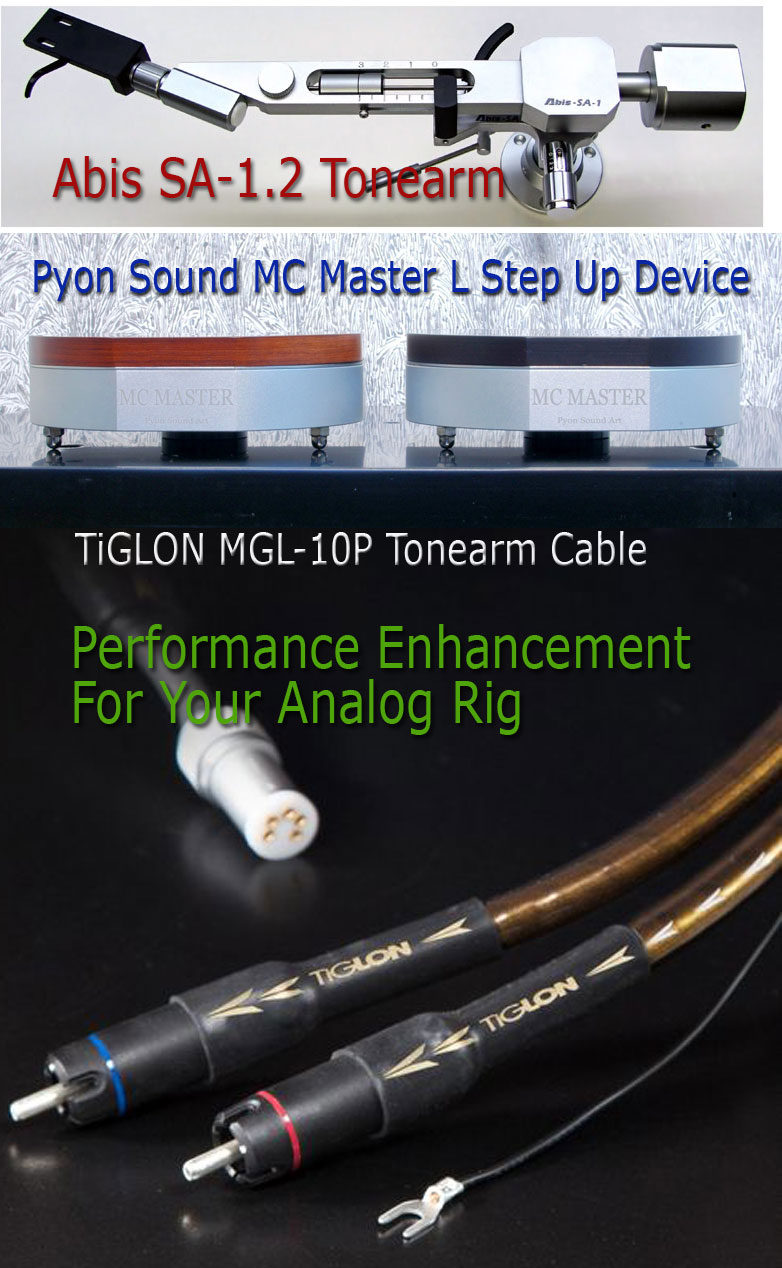
 Ever since I added the excellent George Warren turntable to my system, I have developed a new found appreciation for vinyl and all its virtues. Consequently, whenever I travel on business I inevitably find my way to whatever used records stores I can find in the cities I travel to. I love my analog rig, which along with the George Warren table also consists of the Moth Arm2 (a modified Rega RB200 tonearm re-wired with silver wire from Incognito out of the UK) and a few different cartridges including the Benz Micro ACE-L, Transfiguration Phoenix (borrowed), Denon DL110, and most recently, the Charisma Audio MC-2. Finally, my phonostage has been the awesome Pass Labs XP-15. But at last year’s AXPONA show in Chicago I was taken aback by two George Warren tables I saw because neither of them had the Moth Arm2 on them which came standard on my table. One of the tables had a Pete Riggle designed “Woody” tonearm on it and the other had a Mørch DP8 on it. So while I had no qualms with the performance of the Moth Arm2, it was the first time that I was curious as to whether I could significantly upgrade my tonearm. Now when I say “can I upgrade,” I know that I can spend more, but the question is, would a different arm be enough of an improvement to make me want to change?
Ever since I added the excellent George Warren turntable to my system, I have developed a new found appreciation for vinyl and all its virtues. Consequently, whenever I travel on business I inevitably find my way to whatever used records stores I can find in the cities I travel to. I love my analog rig, which along with the George Warren table also consists of the Moth Arm2 (a modified Rega RB200 tonearm re-wired with silver wire from Incognito out of the UK) and a few different cartridges including the Benz Micro ACE-L, Transfiguration Phoenix (borrowed), Denon DL110, and most recently, the Charisma Audio MC-2. Finally, my phonostage has been the awesome Pass Labs XP-15. But at last year’s AXPONA show in Chicago I was taken aback by two George Warren tables I saw because neither of them had the Moth Arm2 on them which came standard on my table. One of the tables had a Pete Riggle designed “Woody” tonearm on it and the other had a Mørch DP8 on it. So while I had no qualms with the performance of the Moth Arm2, it was the first time that I was curious as to whether I could significantly upgrade my tonearm. Now when I say “can I upgrade,” I know that I can spend more, but the question is, would a different arm be enough of an improvement to make me want to change?
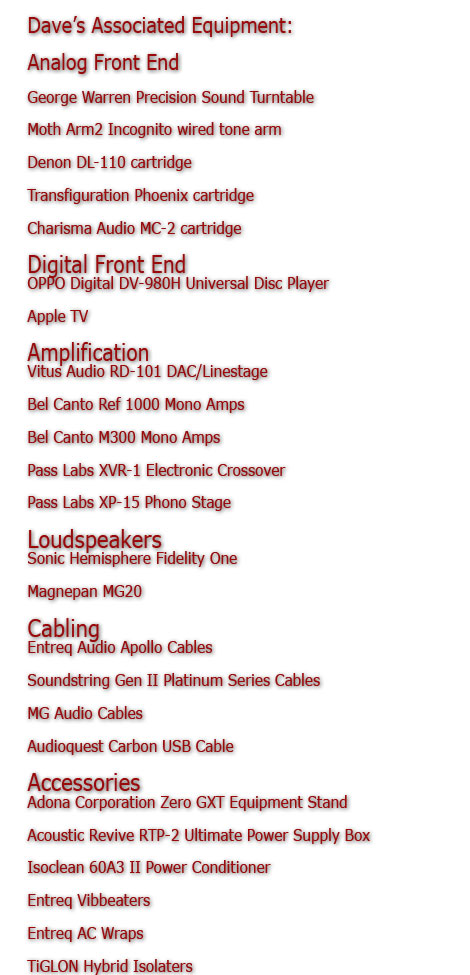
For a long time I searched the web looking for tonearms that I could review that might make a good match for my turntable. Then one day I happened across the website of Mockingbird Distribution. I love distributors like Mockingbird because they go out of their way to bring products to the marketplace that are not just popular, but instead represent innovative design, great aesthetics, great sound and relative affordability. Names like Abis, Pyon Sound, and TiGLON are not common to most U.S. audiophiles in the same way that names like Audio Research, Krell and VPI are. So if you’re an American distributor of products from Japan, China and South Korea, you have to be willing to take more of a leap of faith that these lesser known products will do more than be more affordable, they must also be at least as good sounding and well built. We Americans have a bad habit of immediately associating the word affordable with “cheap.”
After a series of emails with Mockingbird’s Phillip Holmes, the owner, marketer, consultant, customer service tech, etc., he agreed to send me the Abis SA-1.2 tonearm. But then a funny thing happened on the way to a simple tonearm review. Over the next few days Phillip also offered to send me the MGL-10P tonearm cable, MS-12SPII speaker cables, and Hybrid Isolators from TiGLON of Japan. In addition to all that he would also send the MC Master moving coil step-up device from Pyon Sound of South Korea. Within a week, all of these products were in my home. All of them accept the Abis SA-1.2 tonearm, which is how this little journey began.
But all was well. While waiting for the tonearm to arrive, I had plenty of time to use some of the other products. In fact, one of the first things I used was the TiGLON Hybrid Isolators. These excellent little magnesium footers worked famously under my little OPPO CD player. In fact, I liked them so much that I recognized them as one of my 2014 Stereo Times “Most Wanted Components.”
The next thing I used was the TiGLON MS-12SPII speaker cables. It came as a single 12’ cable that I cut and stripped to make a 6’ pair. I didn’t use any termination as Holmes suggested that the cables would sound best with bare wire. I got to use these cables during my listening sessions with the Arcam A19 integrated amp that I recently reviewed. Sonically, the MS-12SPII is quite a wonderful sounding cable and worked well with the Arcam amp and my Sonic Hemisphere Fidelity One three-way loudspeakers. The high frequencies and midrange were surprisingly coherent, even at loud volume levels, though the bass gets a bit boomy too. Still, on less demanding speakers I would imagine that this little speaker cable would have a nice tonal balance. And at just $88/meter pair, they seemed an exceptional bargain.
After a few more weeks, the Abis SA-1.2 tonearm finally arrived and it was time to do an overhaul of my analog rig.
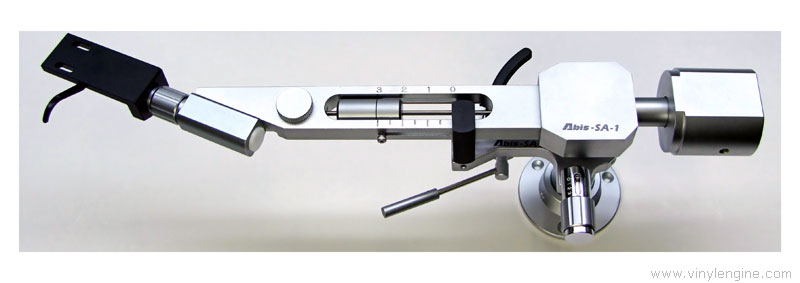
Abis SA-1.2 Tonearm
The first thing that I noticed about the SA-1.2 was its stunning fit-n-finish. According to Holmes, “the look of the Abis SA1.2 is dictated by two desires of the designer: to cut the arm from billet material and to use a detachable headshell. In order to use a detachable headshell, while cutting the arm from billet material, the best option was to mount the collet on a separate billet piece, to be mounted to the main part of the tonearm. Otherwise, some very strange, and more expensive, and weird looking setup would have been necessary if it were cut from one piece of billet aluminum. So, the two-piece approach wound up being the most pragmatic.”
Looking at their website, I learned that the SA-1.2 and SA-1.2B (black version, which I received) use premium ball bearings. Bearings used for horizontal movement are axial-loaded, angular-contact, thrust-bearings. They have zero play and are held in contact by gravity. You can think of them as acting like a unipivot, but with more than one contact point. Because they have two tapered seats, they will self-align in the presence of a load (gravity), have exceedingly low moving friction and are especially suited to angular and axial loads. The angular error needed to misalign these special bearings, commonly used in high precision machinery, are so severe that they fall well outside the operating conditions for a turntable. Traditional deep-grooved ball-bearings are not specifically designed to take an axial load, being better suited for radial loads like a wheel bearing, and they suffer from much higher rolling resistance. While the quality of the bearing materials are a key to success, the proper choice and loading of bearings is just as important.
Also key to the performance of all tonearms, and especially the SA1.2 and SA1.2B, is the resonance characteristics of the arm “tube”. The SA1 design is built from four pieces of billet aluminum, milled to tight tolerances, finished, fitted by hand, and torqued to settings determined by experimental observations. The torque values chosen introduces preload on the fasteners, and produces hysteresis stresses (basically, inner friction) in the crystalline structure of the metal. These stresses damp vibration by forcing the crystalline structure to be more tightly bound, than when in a free state. The elastic and anelastic properties of all four pieces are slightly different, preventing dominant acoustical nodes from developing.
When properly machined, fitted and torqued, a unit composed of several milled pieces will have lower maximum resonance, with several smaller resonance frequencies, compared to an arm tube composed of one piece. In practice, a combination of surface finish, damping materials, shape, density, alloy, crystalline structure, fastening technique, and fastener preload, among others, will determine the relative distribution of acoustic energy in a tonearm. Since extremely dense (heavy) materials, like depleted Uranium, don’t easily lend themselves to use in tonearms, a holistic approach is necessary.
The rectangular shape, the tight assembly by hand, and the nature of billet aluminum creates a low-resonance design that is essentially quiet. The preference for 12″ arms such as the SME V has more to do with compliance match, than the perceived advantages of a 12″ arm. With the SA1.2 and SA1.2B, the tracking error is very low, while the superior sonic signature of the billet aluminum arm parts, and the mass equivalent to most 12″ arms, gives 12″ arm sound in a compact form. It is ideally suited for low to medium compliance cartridges, especially those that are particularly problematic when it comes to mistracking.
As it turned out the reason why there was a little delay in getting the arm to me was that they were finishing up some upgrades to the arm. These included upgraded bearings, improved geometry and a different center of gravity. The upgrades to the bearings had to do with a different style of spacer and lubricant inside the bearing assembly. Without spacers, the balls can bunch together, causing the assembly to bind or collapse (this is the same for most bearing assemblies). The balls and races are the same.
Finally, as complex as the SA-1.2 looks, it is actually quite easy to setup thanks to the use of a template that helps you accurately align the spindle center point with the center point of the tonearm. Also included is the AccuTrak cartridge alignment protractor which is available to use for all Abis arms. Simply print out the AccuTrak (make sure it’s to scale), place it on the spindle and adjust the stylus position according to the designated spots on the AccuTrak. Once the stylus touches all of the designated spots, simply tighten the cartridge to the headshell and voila! The excellent owner’s manual also goes over proper anti-skate and tracking force adjustment. It took me less than an hour to setup the arm and cartridge get the whole rig dialed-in to my liking.
 So what did this all translate into for my analog setup? Well, first and foremost is a clean and quiet backdrop that seemed to push more of the musical performance to the forefront. Using the Transfiguration Phoenix cartridge I played Esperanza Spaulding’s Radio Music Society [Concord]. Spaulding’s voice on “Smile Like That” poured out of my Maggies like warm, buttery syrup. But if I told you that her voice sounded out apart from the bass; that would be weird. Why? Because Spaulding is the one playing the bass. Thankfully, her vocal and excellent musicianship were in unison. The effect is that of an accurate rendering of a singer and her instrument supported by an excellent rhythm and horn section. In other words, when I buy an album like this, though there are many musicians performing, what I paid for was Spaulding and her bass, and what my analog setup gave me was Spaulding and her bass. The same can be said of Patricia Barber singing “Ode to Billy Joe” on her Café Blue album [Mobile Fidelity]. Well, with one small difference. On this track, the bass is coming from Mike Arnopol and not Barber. What is interesting about this tune is that Barber’s voice and finger snaps are rendered with a slight echo effect while Arnopol’s bass appears not to be, and you can distinctly hear it. It somehow makes the recording more interesting.
So what did this all translate into for my analog setup? Well, first and foremost is a clean and quiet backdrop that seemed to push more of the musical performance to the forefront. Using the Transfiguration Phoenix cartridge I played Esperanza Spaulding’s Radio Music Society [Concord]. Spaulding’s voice on “Smile Like That” poured out of my Maggies like warm, buttery syrup. But if I told you that her voice sounded out apart from the bass; that would be weird. Why? Because Spaulding is the one playing the bass. Thankfully, her vocal and excellent musicianship were in unison. The effect is that of an accurate rendering of a singer and her instrument supported by an excellent rhythm and horn section. In other words, when I buy an album like this, though there are many musicians performing, what I paid for was Spaulding and her bass, and what my analog setup gave me was Spaulding and her bass. The same can be said of Patricia Barber singing “Ode to Billy Joe” on her Café Blue album [Mobile Fidelity]. Well, with one small difference. On this track, the bass is coming from Mike Arnopol and not Barber. What is interesting about this tune is that Barber’s voice and finger snaps are rendered with a slight echo effect while Arnopol’s bass appears not to be, and you can distinctly hear it. It somehow makes the recording more interesting.
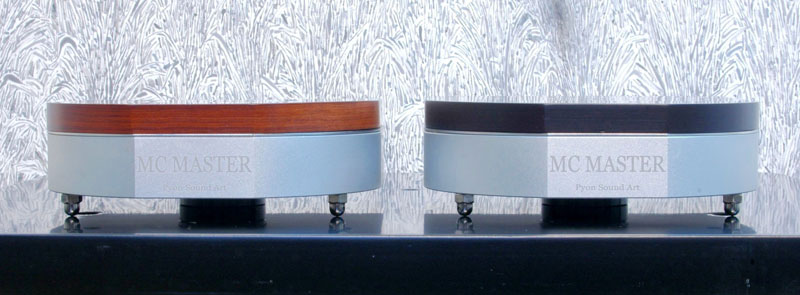
Pyon Sound MC Master L Step Up Transformers
With the Abis arm firmly entrenched in my system, it was now time to add the Pyon Sound step-up transformer. No matter how sophisticated electronic amplification devices may be these days, there’s still no way to prevent some distortions from creeping into the signal coming out of even the finest phono cartridges, especially low-output cartridges. This is where a well-built moving coil step-up device with intricately hand wound transformers like the Pyon Sound MC Master comes into play.
The MC Master comes in two versions: The MC Master L (used in this review) for low impedance and the MC Master H for high impedance cartridges. The device is designed by Mr. John Park, the owner of Pyon Sound. He is also the person who makes their gorgeously hand-wound transformers. Mr. Park is responsible for creating a material called Picawood which greatly resembles Panzerholz. It’s made of various layers of wood that are pressed together. The finished product is like a very dense plywood that is acoustically dampened. This Picawood is what’s used on top of the transformer’s case and the rest of the device made from a single billet of “duralumin.” The case is completed with Pyon’s own resonance control feet. The case is completed with two pairs of gold-plated RCA connectors and two toggle switches for setting loading impedance.
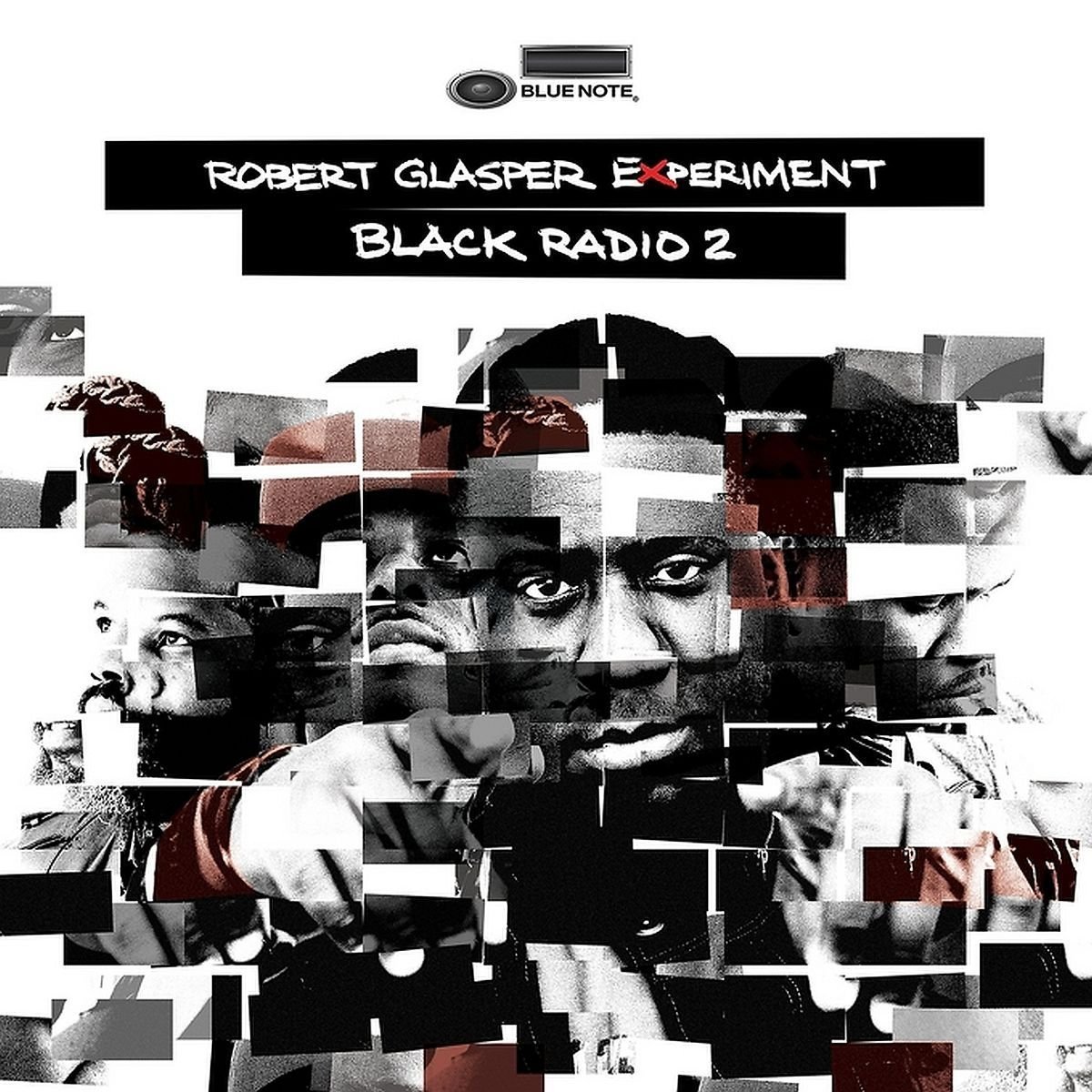 I used the MC Master with a low-output moving-coil cartridge through my Pass Labs phono-stage’s moving magnet section sensitivity set for low gain and 47K loading. Secondary loading can be adjusted to change the reflected load of the transformer. With two transformer taps on the MC Master, and adjustable loading on the phono stage, you can easily tailor the sound of a MC cartridge.
I used the MC Master with a low-output moving-coil cartridge through my Pass Labs phono-stage’s moving magnet section sensitivity set for low gain and 47K loading. Secondary loading can be adjusted to change the reflected load of the transformer. With two transformer taps on the MC Master, and adjustable loading on the phono stage, you can easily tailor the sound of a MC cartridge.
So what effect did adding the MC Master L have on my system? To be honest, it wasn’t all that different from the effect of installing the Abis arm. The musical images seemed to be even better defined at the frequency extremes adding a bit more definition to instruments and voices. Case in point, the song “Calls” which is sung by R&B diva Jill Scott on the Robert Glasper Experiment’s Black Radio 2 [Blue Note]. Before adding the MC Master, I’d always considered this song and most of the album to have been recorded with a little over-emphasis at the upper and lower frequencies. But with both the addition of the Abis arm and now the MC Master the highs sound a bit more warmed-up and without any hint of edge. Some may think it’s a tad rolled off, but to me it sounds more… natural. On the bottom the bass is certainly a bit more tuneful and solid. There’s no bloat even as I pushed the volume level while playing “Persevere” (featuring Snoop Dogg) from the same album.
The Pyon Sound is a beautifully crafted device and at $1,500 will certainly be a worthy addition to many analog rigs.
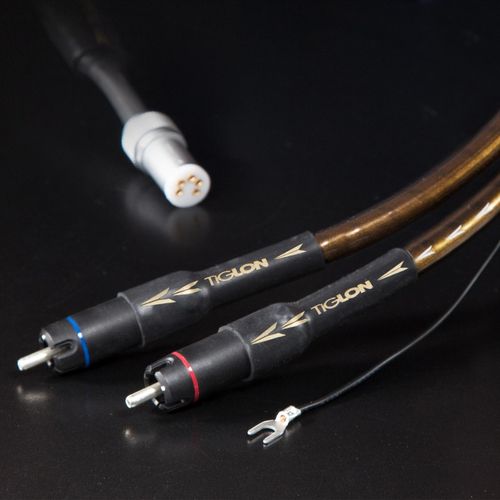 TiGLON MGL-10P Tonearm Cable
TiGLON MGL-10P Tonearm Cable
The final change that I made to my analog set-up was replacing the Abis tonearm’s cable with the TiGLON MGL-10P tonearm cable. I must admit, that this was the change that I expected to get the least improvement from, simply because the cable that came with the Abis arm was already a very fine cable. So, I thought, how much better can the TiGLON cable be? Well, the answer to that reminds me of a story that comedian Kat Williams told during one of his stand-up performances. He said that people often said that the Chrysler 300 “looks just like a Bentley Phantom.” He continued, “Yeah, a Chrysler 300 looks like a Bentley Phantom… until a Bentley Phantom pulls up.” The Abis tonearm cable is as much a tonearm cable as the TiGLON MGL-10P… until you replace it with the TiGLON.
TiGLON products are designed and produced by Mr. Okino-san, who worked with Hitachi to get cutting edge conductors and with various magnesium manufacturers in Japan to produce a magnesium tape that is thin and flexible enough to work as a shield in audio cables.
Magnesium offers an outstanding combination of vibration absorption, mechanical rigidity and electromagnetic shielding. It is used in aerospace and auto racing, and in the manufacturing of tonearms and cables for audio. In the MGL-10P, TiGLON uses a magnesium foil that has excellent audio characteristics and blocks external EMI/RFI radiation. The individual positive and negative cables are encased together in an attractive nylon jacket. The cables also use high-grade RCA connectors that provide a very snug and solid fit. With its beautiful construction and use of high-quality parts, this is a cable that looks like it should only be used on substantial arms like the Abis. This is probably why the two worked together so synergistically.
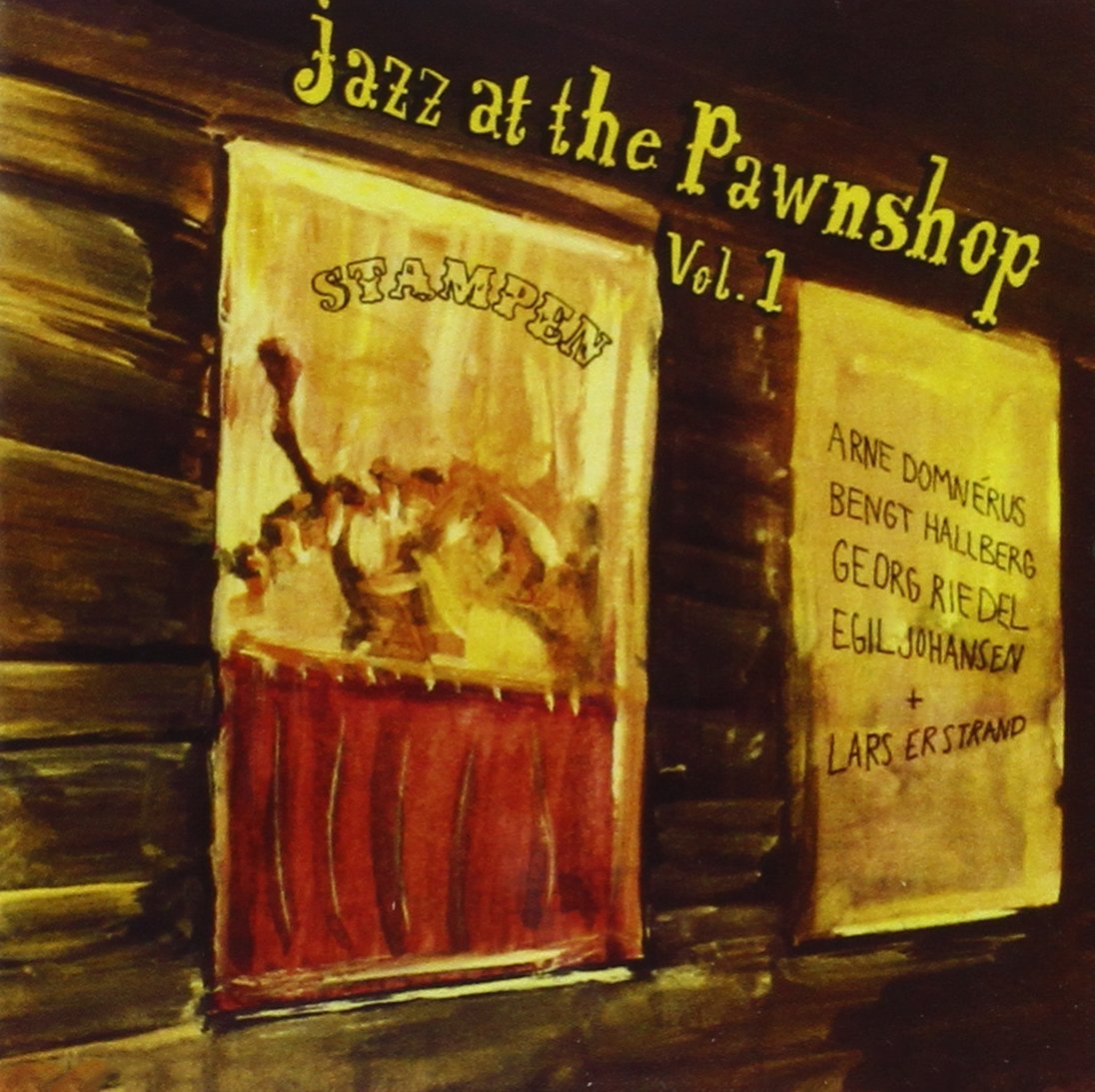 The impact on my analog set-up was immediate. The soundstage, particularly on my live recordings opened up and expanded. Not a whole lot, but enough to make me pull out all the live vinyl I could find. I must have listened to the live Swedish jazz club recording, Jazz at the Pawnshop [Proprius] a thousand times over the years and I’m not sure I’ve ever heard it quite like this. The second track on side one, “I’m Confessin’” features a wonderful solo by vibraphonist Lars Erstrand. The soundstage filled my 26’ x 20’ listening room and the percussive nature of Erstrand’s instrument is so well rendered that it’s startling. The TiGLON cable seems to allow more high-frequency detail to come through. Some may say it’s a little on the “bright” side but frankly, that’s where a lot of high-frequency detail resides. I like to think that the cable is just being honest. Because when you consider that while you get so much more high-frequency detail it doesn’t come at the addition of low-frequency bloat. That’s a pretty neat trick, and again, I think it’s simply a tribute to the cables honesty. Good or bad. Right or bright, you get what the recording gives you. So be careful of what you buy at those used record stores.
The impact on my analog set-up was immediate. The soundstage, particularly on my live recordings opened up and expanded. Not a whole lot, but enough to make me pull out all the live vinyl I could find. I must have listened to the live Swedish jazz club recording, Jazz at the Pawnshop [Proprius] a thousand times over the years and I’m not sure I’ve ever heard it quite like this. The second track on side one, “I’m Confessin’” features a wonderful solo by vibraphonist Lars Erstrand. The soundstage filled my 26’ x 20’ listening room and the percussive nature of Erstrand’s instrument is so well rendered that it’s startling. The TiGLON cable seems to allow more high-frequency detail to come through. Some may say it’s a little on the “bright” side but frankly, that’s where a lot of high-frequency detail resides. I like to think that the cable is just being honest. Because when you consider that while you get so much more high-frequency detail it doesn’t come at the addition of low-frequency bloat. That’s a pretty neat trick, and again, I think it’s simply a tribute to the cables honesty. Good or bad. Right or bright, you get what the recording gives you. So be careful of what you buy at those used record stores.
All Together Now!
Okay, so now I’ve replaced my Moth arm with the Abis SA-1.2. I’ve added the Pyon Sound MC Master moving coil step-up transformer to the MM section of my Pass phonostage. And finally, I’ve replaced the stock tonearm cable that comes with the Abis arm with the TiGLON MGL-10P. So what did I get for all of these changes? Well, a quieter background that gives increased definition to the depth and height of the soundstage. I also got greater definition of vocals and instruments. The resonant characteristics of unique voices such as Kurt Elling and Sade really come to life when rendered by a highly resolved front end like this. And finally, I got a more expansive soundstage with greater extension at the frequency extremes.
With all of these enhancements in place, I couldn’t find enough vinyl to satisfy my jones. But one album that did help me to check all the boxes for what I wanted from an analog setup was my 2011 digitally re-mastered 180g double-album of Pink Floyd’s The Wall [Capitol]. “In The Flesh” is one of the coolest songs to ever lead off a rock album. I’m surprised that no pro wrestler that I know of has ever used it for their intro music. It’s intimidating with all of its whaling guitars and especially Nick Mason’s slammin’ drumwork. And the sound effects used throughout the album such as the diving airplane at the end of “In The Flesh” and the landing helicopter on “The Happiest Days of Our Lives” can scare the crap out of you if played loudly enough. The soundstage of my reference system seemed to be enlarged in all directions with these enhancements in place. Though a much more subtle tune, “Comfortably Numb” is another track that came to life. I have never heard all the layers of this tune sound quite as coherent as they did now. The vocals of Waters and Gilmour are haunting on this track and again, Nick Mason on drums is fantastic. Another detail that gets fleshed out here are the horns that back up Water’s bass.
Conclusion
Of the three pieces, the Abis SA-1.2 tonearm is the one that I believe made the biggest impact on improving the sound of my analog setup and is the one piece that I have made a permanent part of my system. The Pyon Sound MC Master is a wonderful and in the right system can bring an analog rig with a need for a boost to a whole new level of performance. And the TiGLON MGL-10P phono cable is awesome and it may yet find its way into my system as well. It works that nicely with the Abis arm. I can’t thank Phillip Holmes enough for his knowledge and passion for the products he represents and the time he allowed me to work all of the products he sent me into my system. It has been a more than satisfying experience, it has changed the way that I listen to vinyl. Highly recommended.


dave thomas
Specifications:
Abis SA-1.2 Tonearm
Effective length: 239mm (SA-1.2)
Mounting distance: 223mm (SA-1.2)
Overhang: 16mm
Offset angle: 22.25 degrees (SA-1.2)
Tracking force: 0 to 4.5g
Cartridge weight range: 15-45g (inc. headshell)
Headshell weight: 17g machine tooled aluminum
Height adjustment: 40mm (SA-1.2)
Horizontal bearing: miniature radial bearing
Weight: 755g (SA-1.2)
Price: $1,775.00
Pyon Sound MC Master
This MC Master L is for low impedance cartridges, and its top cover is natural wooden brown. It has two gain options:
Low impedance position : suitable for cartridges with less than 7 Ohms internal impedance
High impedance position : suitable for cartridges with higher than 7 Ohms but less than 15 Ohms internal impedance
Price: $1,500.00 (Direct from Mockingbird Distribution)
TiGLON MGL-10P Tonearm Cable
Magnesium foil tape shielding
Magnesium RCA plugs
Price: $1,400.00/1M pair (Direct from Mockingbird Distribution)
Contact:
U.S. Distributor
Mockingbird Distribution, LLC
5070 François Cusson
Dallas, TX 75214
Telephone: +1(214) 668-2509
Website: http://www.mockingbirddistribution.com
Email: mockingbirddistributionllc@gmail.com
Stereo Times Masthead
Publisher/Founder
Clement Perry
Editor
Dave Thomas
Senior Editors
Frank Alles, Mike Girardi, Russell Lichter, Terry London, Moreno Mitchell, Paul Szabady, Bill Wells, Mike Wright, and Stephen Yan,
Current Contributors
David Abramson, Tim Barrall, Dave Allison, Ron Cook, Lewis Dardick, John Hoffman, Dan Secula, Don Shaulis, Greg Simmons, Eric Teh, Greg Voth, Richard Willie, Ed Van Winkle, Rob Dockery, Richard Doran, and Daveed Turek
Site Management Clement Perry
Ad Designer: Martin Perry





Be the first to comment on: Abis SA-1.2 Tonearm, Pyon Sound MC Master L Step Up Device and TiGLON MGL-10P Tonearm Cable